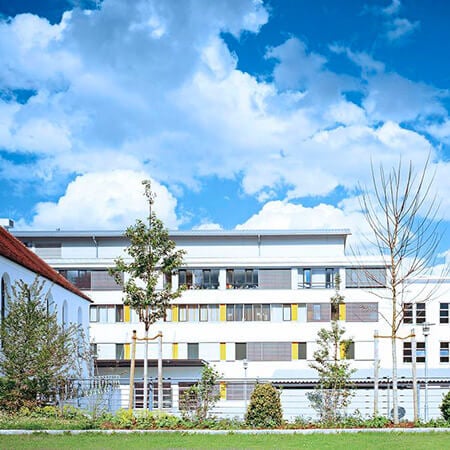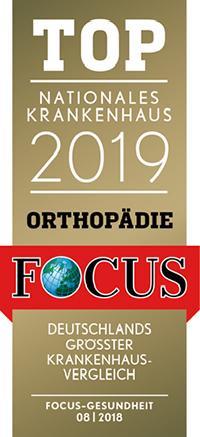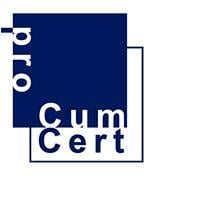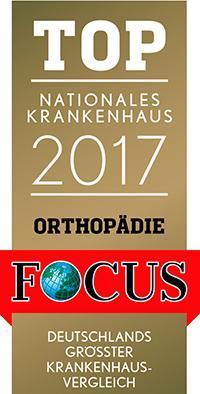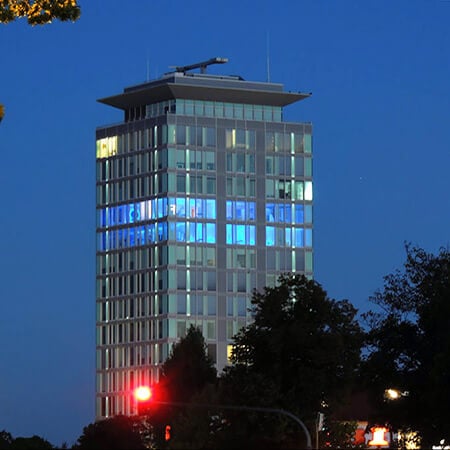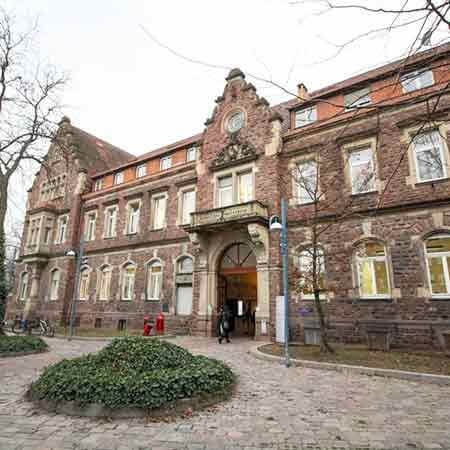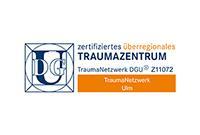Meniscus tear is the most common knee injury. Menisci are cartilage pads that cushion the impact load to hyaline cartilage. There are two menisci in the human knee: lateral and medial (external and internal). In 85% of cases, the external one is damaged. About 15% of injuries involve medial meniscus tears, and these injuries have more serious consequences, since they often lead to the development of knee osteoarthritis. Most patients undergo surgical treatment. There are two main surgical procedures: suture and resection (partial removal) of the meniscus.
Content
- Conservative therapy
- Principles of surgical treatment
- Meniscus restoration
- Meniscus resection
- Where is it better to undergo treatment
The preferred method of treatment is minimally invasive arthroscopic surgery, during which the doctor restores the meniscus. Less often, conservative therapy is performed, aimed at self-healing of the damaged meniscus.
The Academic Hospital DRK Berlin Westend, the Catholic Clinic Koblenz-Montabaur, the Brothers of Mercy Hospital Munich specialize in the treatment of meniscus tear. You can find a full list of clinics on the Booking Health website.
You can make an appointment at any German clinic with the help of Booking Health. In addition to choosing a clinic and a doctor, Booking Health specialists will provide you with information about modern treatments, help you prepare medical documents, get a visa and medical insurance. Company managers will organize flights, transfers and accommodation, as well as provide you with an interpreter. Booking Health doctors will additionally control all stages of treatment, up to your successful return home.
Conservative therapy
Most patients require surgery if they have a meniscus injury. Conservative treatment is rarely used and it is possible under the following conditions:
- Lateral meniscus tear
- Tear area does not exceed 1 cm
- Tear is stable
- There is no knee block
Such injuries are rare. Their consequences resolve on their own over time. The patient only needs symptomatic therapy and help in the acute phase of the injury.
Immediately after the meniscus tear, the knee swells and blood accumulates in it. The doctor performs a puncture: pierces the skin and joint capsule with a needle to remove fluid. He then injects anesthetics and anti-inflammatory drugs.
Further treatment includes:
- Restriction of movements in the knee for several weeks
- Orthoses are used, if necessary
- Painkillers may be used in the first few days
- Physiotherapy starts after a few days
Principles of surgical treatment
After knee meniscus injury, doctors perform operations that are aimed at:
- Meniscus repair – the most preferred option
- Partial meniscectomy – the simplest and the most commonly used treatment option, which is used in 70% of cases, and in countries with poorly developed medicine in 90% of cases
- Total meniscectomy in severe damage
- Meniscectomy with the further meniscus prosthetic repair – avoids the development of knee arthrosis
In developed countries, almost all meniscus surgeries are performed with arthroscopy. They are performed through short incisions of a few millimeters long. A video camera with lighting and thin long instruments are inserted into the knee. In countries with poorly developed medicine, arthrotomy is still performed – the opening of the joint cavity. This is a traumatic operation, after which it takes 1-1,5 months to recover. In case of arthrotomy, patients lose more blood, are more likely to suffer from complications, and an unaesthetic scar remains in the knee.
Meniscus restoration
For the treatment of meniscus injuries in Germany, their suturing is considered the first choice technique. It is possible in about one in three patients.
The problem with meniscus suturing is that this cartilaginous structure has no blood supply. It consists of three zones, which gradually merge into one another. These zones are called red, pink and white. The red zone has blood supply from the adjacent knee capsule, the pink zone has poor blood supply, and the white zone has no blood supply at all. The white part of the meniscus is the largest, it receives nutrients from the synovial fluid of the knee joint, and metabolic processes in it are very slow. If the tear has affected the white zone, there is no chance of a meniscus fusion. However, the closer the tear zone is to the capsule, the better it is supplied with blood, and the higher the likelihood of healing.
Patients who meet the following criteria are considered candidates for meniscus suturing:
- Tear in the red and pink zone
- No degenerative changes in the knee joint
- No more than 3 months have passed since the injury
- Body mass index does not exceed 35 kg/m2
- Age up to 45 years
- Good health
In some medical centers, patients are operated on at an older age, including those with grade 1-2 obesity. However, in this case, the chances of meniscus repair are reduced.
Advantages of meniscus reconstruction surgery with suturing are as follows:
- The most physiological way to restore the meniscus
- The risk of developing knee arthrosis does not increase
- Maximum loads on the knee joint are possible
The operation also has disadvantages:
- Recovery takes several months, as the cartilage tissue fuses very slowly
- The risk that the meniscus will not heal at all is on average 15%, and such patients will need repeated operation. However, the likelihood of failure is much lower in young people with normal weight, in nonsmokers who do not have chronic diseases
In German clinics, cell technologies are used to increase the chances of meniscus fusion and accelerate recovery. Platelet-rich plasma and stem cells from the patient's adipose tissue are injected into the knee to accelerate the regenerative processes.
Meniscus resection
In the twentieth century, part of the meniscus was removed without hesitation. This operation was preferred in the overwhelming majority of cases. However, studies have shown that patients with the absence of a fragment of the meniscus more often develop knee arthrosis, and it often reaches a severe degree even at a young age.
In the twenty-first century, the number of meniscus resection surgeries is declining, especially in developed countries. However, even today, this type of surgical intervention accounts for 70% of cases of surgical treatment of meniscus injuries, since many tears are considered unpromising for recovery.
Indications for meniscus resection:
- Severe meniscus injury
- The presence of degenerative changes in the knee joint that reduce the chances of cartilage regeneration in the case of meniscus suture
- Tears in the white zone
- Non-fusion of the meniscus after suturing
Benefits of meniscus resection are:
- Fast recovery – you can walk 2 weeks after arthroscopy, and 4 weeks after the patient can return to sports training (no need to wait for the cartilage tissue to regenerate)
- Fast, technically simple operation with minimal risk of failure
- No more than 1% of patients need repeated surgery
Simultaneously with the treatment of the meniscus tear in Germany, the doctor can perform anterior cruciate ligament reconstruction. These two structures are often damaged at the same time. The new ligament can be formed from autologous, donor or artificial materials. After the surgery to eliminate the consequences of a combined injury, recovery takes longer – up to 4-6 months.
Where is it better to undergo treatment
In case of the meniscus injury, you can go to one of the clinics in Germany. The best athletes from all over the world undergo meniscus tear treatment in Germany, as here they can count on minimally traumatic, effective treatment, rapid recovery and a low risk of recurrence.
Why is it worth undergoing treatment in Germany:
- Highly accurate diagnostics to determine all the consequences of the knee injury
- Suturing is preferred over meniscus removal, as this is a more physiological method; the risk of developing arthrosis does not increase after surgery
- Minimally invasive arthroscopic surgery is preferred
- Cell technologies are used for accelerated cartilage tissue regeneration
- After meniscus resection, the recovery period is only 3-4 weeks due to the use of minimally invasive surgical techniques
- After surgical treatment, patients can undergo orthopedic rehabilitation to fully and as quickly as possible restore the knee joint function
With Booking Health, you can find the best German hospital whose doctors achieve outstanding success in the treatment of injuries of ligaments and menisci. Our website specifies the current cost of medical services in different clinics. You can compare prices to book a medical care program at a favorable price. The specialists of the Booking Health company will fully organize your trip abroad.
Authors:
The article was edited by medical experts, board-certified doctors Dr. Nadezhda Ivanisova and Dr. Sergey Pashchenko. For the treatment of the conditions referred to in the article, you must consult a doctor; the information in the article is not intended for self-medication!
Sources:
Articles for Orthopaedic Practice - Orthogate
MedicineNet
